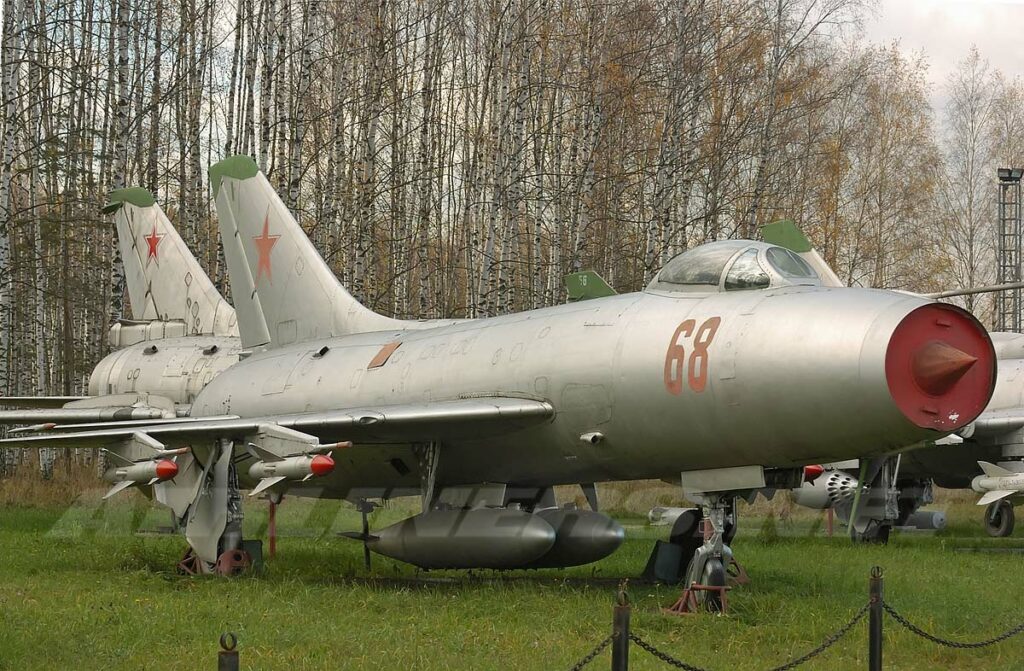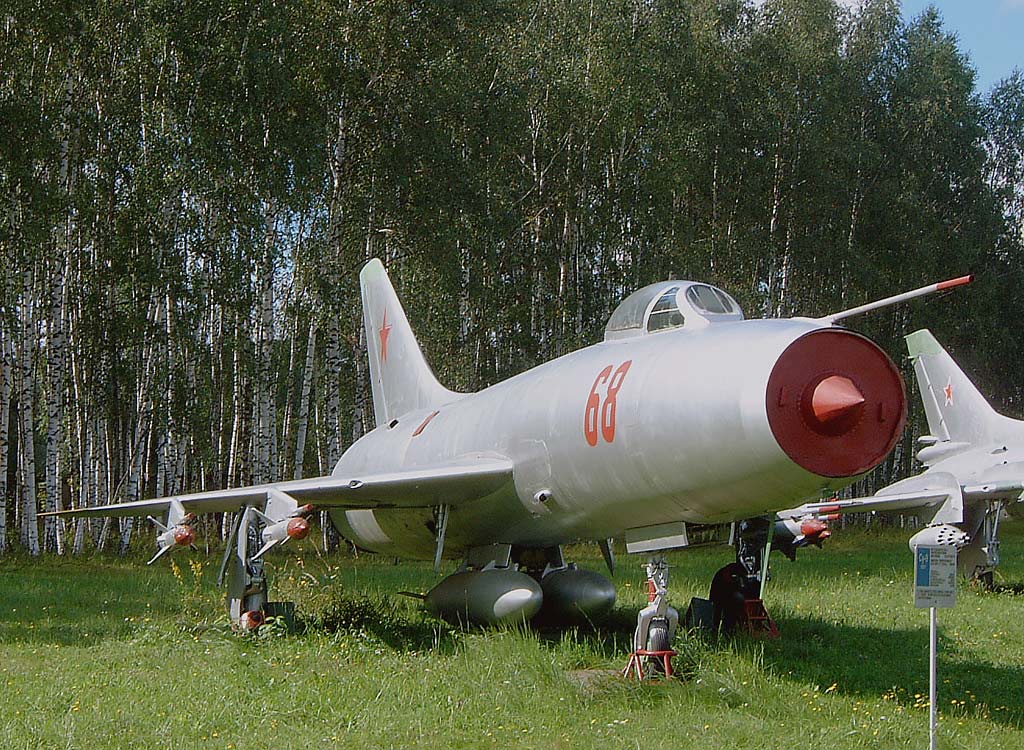The Sukhoi Su-9 Fishpot was a Soviet delta-wing, supersonic interceptor designed for air defense during the Cold War era.
In brief
The Sukhoi Su-9 (NATO reporting name: Fishpot) was a single-seat, all-weather, delta-wing interceptor aircraft developed by the Soviet Union in the 1950s. Featuring a Lyulka AL-7 turbojet engine, it was capable of reaching supersonic speeds and designed primarily for high-altitude interception missions. The Su-9 was equipped with radar for target acquisition and guided missiles as its primary armament, making it one of the key components of the Soviet air defense during the Cold War. Its design emphasized speed and altitude performance, trading off maneuverability and range. Approximately 1,100 Su-9s were produced, serving as a critical part of Soviet air defenses until it was replaced by more advanced models.

Introduction
In the context of the Cold War’s escalating arms race, the Soviet Union sought to bolster its air defense capabilities against potential high-speed, high-altitude threats from Western bombers and reconnaissance aircraft. The development of the Sukhoi Su-9, initiated by the Sukhoi Design Bureau led by Pavel Sukhoi, aimed to address this need with a state-of-the-art interceptor that could meet and surpass the performance of contemporary Western aircraft.
The Su-9 program was launched in the mid-1950s, with its first flight occurring in 1956. This period was marked by rapid advancements in aviation technology, with both superpowers striving to achieve air superiority. The “Fishpot” nickname, assigned by NATO, reflects the aircraft’s role in the Soviet air defense strategy as a potent interceptor.
Design
The Sukhoi Su-9’s design was characterized by its sleek, delta-wing configuration, which provided the necessary lift and speed characteristics for high-altitude interception. The aircraft measured approximately 17.8 meters (58.4 feet) in length, with a wingspan of 8.43 meters (27.7 feet). Its airframe was constructed to withstand the rigors of supersonic flight, featuring a durable, all-metal construction.
Powered by a single Lyulka AL-7 turbojet engine, the Su-9 had a thrust that enabled it to reach a maximum speed of over Mach 2. The engine’s placement in the fuselage, combined with the aircraft’s aerodynamic design, contributed to its impressive performance characteristics.
However, the Su-9’s design also had its drawbacks. Its delta-wing configuration limited its maneuverability at lower speeds, and its operational range was relatively short compared to some of its Western counterparts. Additionally, the aircraft’s reliance on radar-guided missiles meant it was less effective in close-range engagements.
Despite these limitations, the Su-9 introduced several technological advancements, including its radar system and missile armament, which significantly enhanced the Soviet Union’s air defense capabilities.
Performance
The Sukhoi Su-9’s performance was a key factor in its role as a high-altitude interceptor. With a top speed of approximately Mach 2.1 (2,200 km/h or 1,367 mph) and a service ceiling of 18,000 meters (59,055 feet), it was capable of engaging enemy aircraft at high altitudes, fulfilling its primary mission of air defense.
The aircraft’s Lyulka AL-7 turbojet engine provided a powerful thrust, but its fuel consumption at high speeds limited the Su-9’s operational range to around 1,350 kilometers (839 miles) without external fuel tanks. This made strategic positioning and refueling critical considerations for its deployment.
In comparison to contemporary Western interceptors, such as the American F-104 Starfighter, the Su-9 was competitive in terms of speed and altitude performance. However, its limited maneuverability and range were seen as disadvantages in certain operational scenarios.
Variants
The Sukhoi Su-9 underwent several modifications throughout its service life, resulting in a few notable variants:
- Su-9: The initial production version, equipped with basic radar and missile armament.
- Su-9U: A two-seat training variant, known as “Maiden,” designed to provide conversion training for pilots transitioning to the Su-9.
These variants reflected efforts to enhance the Su-9’s capabilities and address its operational limitations, although the fundamental design remained consistent across the series.

Military Use and Combat
The Sukhoi Su-9 was primarily deployed within the Soviet Union’s air defense forces, tasked with intercepting potential threats to Soviet airspace. While it did not see extensive combat use in the traditional sense, its presence as a high-altitude interceptor played a deterrent role during the Cold War, contributing to the strategic balance between NATO and Warsaw Pact forces.
The Su-9’s armament typically consisted of radar-guided air-to-air missiles, which were advanced for their time but required the aircraft to lock onto targets at a distance. Its operational doctrine emphasized rapid interception and engagement of incoming threats, leveraging its speed and altitude capabilities.
The aircraft was not exported extensively and remained a key component of Soviet air defenses until it was eventually replaced by more advanced models, such as the Sukhoi Su-15 and MiG-25, which offered improved performance and capabilities.
The Sukhoi Su-9 (Fishpot) was a significant development in the evolution of Soviet interceptor aircraft, embodying the technological and strategic imperatives of its era. Its design, focused on high-speed, high-altitude interception, reflected the Cold War’s demands for air superiority and defense against potential aerial threats. Despite its limitations, the Su-9 contributed to the Soviet air defense strategy, serving as a vital link in the transition to more advanced interceptor designs. Its legacy is marked by its role in enhancing the capabilities of the Soviet Union’s air defense forces during a critical period of geopolitical tension.
Back to the Fighter Jet section.